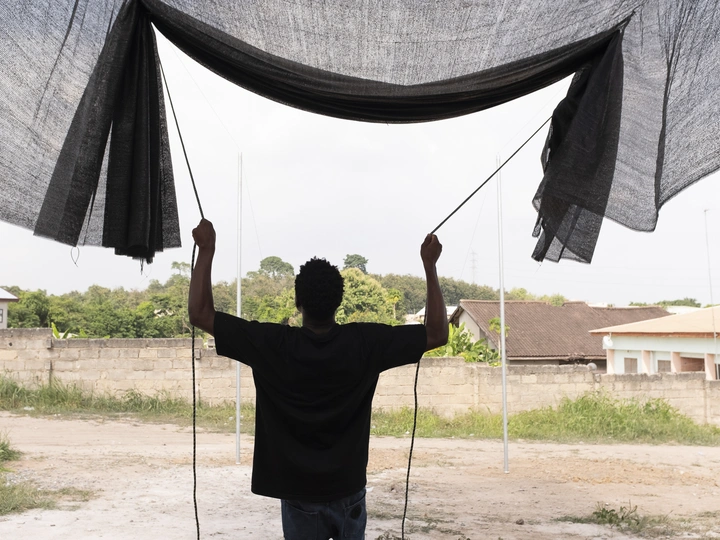Tactics of Civic Care

TAELON7 is a translocal architecture and research practice based between Vienna, London, and Accra. Founded by Juergen Benson-Strohmayer, the studio has developed a body of work over the past decade that spans civic architecture, research, and public space-making across Austria, Ghana, Côte d’Ivoire, Sudan, and Ethiopia.
TAELON7 explores architecture as a tool for liberation—structural, social, and symbolic. The practice moves fluidly between full-scale construction, adaptive reuse, installations, and exhibitions. These varied formats serve as design instruments: testing spatial propositions, activating publics, and cultivating civic imaginaries that inform physical transformation. The studio works in close dialogue with local actors and institutions, often in contexts marked by transition, marginality, or improvisation.
Foregrounding subaltern, queer, and counter-hegemonic spatial identities, TAELON7 challenges dominant paradigms of permanence, authorship, and heritage. Instead, it proposes alternative modes of architectural agency grounded in care, collectivity, and reconfiguration.
Recent projects include a women-led eco-manufacturing campus (Fair Trade Zone), civic and performative structures with the queer-led crazinisT artisT studiO in Kumasi (At the Interstice, TTOX), and the solo exhibition Let It Become What It Needs to Be at MAGAZIN Vienna (2025). The studio’s work has received the Holcim Gold Award for Sustainable Construction (2023) and has been exhibited at the Venice Architecture Biennale (2023), Belvedere Museum (2024), and Shibaura House Tokyo (2023).
Through LINA, TAELON7 brings a methodology that is multiscalar, iterative, and materially engaged. The fellowship offers a platform to deepen and connect architectural approaches that are both discursive and grounded—where civic experimentation, collaboration, and spatial performance feed into longer-term processes of building, adaptation, and reactivation.
In a moment when civic values such as inclusivity, cultural agency, and democratic participation are increasingly under strain, including in post-war and post-crisis contexts such as Ukraine, Tactics of Civic Care proposes spatial tools for reimagining collectivity across geographies. It explores how architecture can support civic infrastructures that are open-ended, adaptive, and rooted in solidarity.
Tactics of Civic Care is a translocal design investigation that unfolds across urban margins, cultural infrastructures, and participatory interventions. It begins in Kumasi, Ghana, where I have developed experimental civic architectures with the queer-led art and performance space TTOX (crazinisT artisT studiO compleX). These include At the Interstice, a temporary gathering space, and the evolving TTOX building, a mid-rise structure that supports performance, visibility, and residency spaces.
The project operates across multiple scales and geographies: from construction to gallery-based translations and civic activations. Its recent iteration, Let It Become What It Needs to Be (Vienna, 2025), translated the work from Kumasi into spatial installations and public programming. This reflects a multiscalar, translocal methodology, where feedback loops between site, exhibition, and public engagement allow for testing, adaptation, and co-authorship.
At its core, Tactics of Civic Care proposes a mode of dynamic architecture: structures that remain flexible and socially adaptive. The TTOX building uses a staged construction and open framework to allow future extension, programming, and reinterpretation, cultivating conditions for ongoing use and negotiation.
In the European context, it offers a transferable methodology for civic architectures in overlooked or transitional spaces. Each version is shaped by local actors and urgencies, yet held together by a shared ethos of solidarity, improvisation, and radical care.